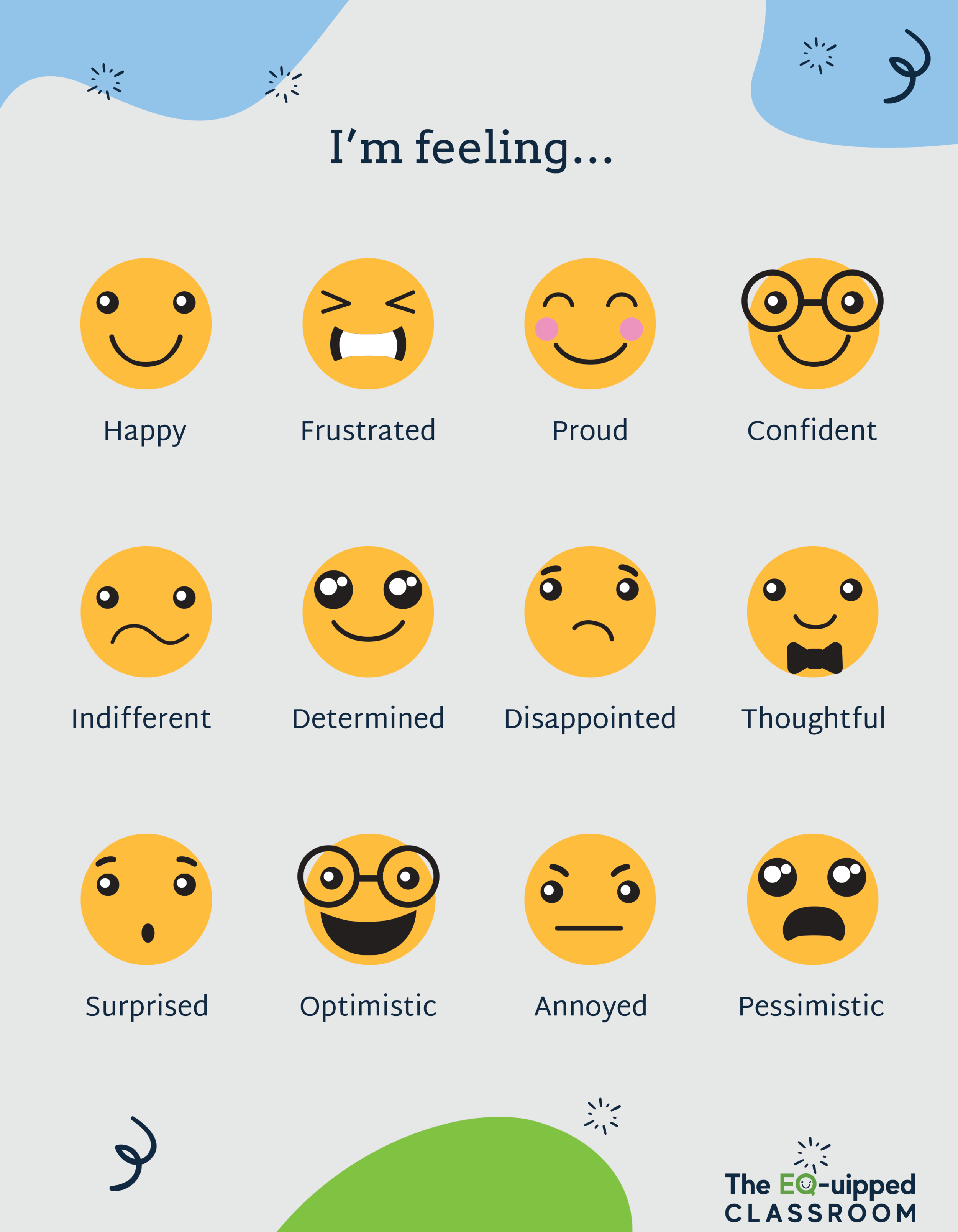Where are you on the Emotions Chart today?
Dear Applied EQ-ers,
Where are you on the Emotions Chart today?
Our team has been traveling the country throughout August, EQ-uipping educators with the Emotional Intelligence tools they need to have a successful school year. One of the resources that has resonated most with teachers and administrators is our Emotions Chart.
I put the Emotions Chart up in my own home for my 3-year-old son, my husband, and me. I was going to put it on my son’s bathroom mirror but then remembered Adam’s words: “The best intervention for a child is a healthy adult.” I’ve realized that despite being an English teacher for ten years and a word nerd for my whole life, I still don’t have a strong vocabulary for my own emotions. So instead of putting it up in my son’s bathroom, I placed it on my husband’s and my bathroom mirror. I didn’t point the chart out to him, but my son noticed it immediately.
“What is it?” he asked, pointing to the chart of faces and looking up at me skeptically.
“It’s pictures for feelings. Which one do you feel right now?”
He immediately pointed to happy. “I feel happy.” Then he paused for a moment and pointed to the angry face, “That’s mad. It’s my favorite.”
I couldn’t help but smile a proud, rebellious smile in response. “Yeah, mad is one of my favorites too. I feel that one a lot.”
He promptly changed the subject to monster trucks, and I wondered if we would ever talk about the feelings chart again.
A few days later, he came busting through the door of our master bedroom and clamored up the countertop sink in our bathroom. I asked him what was wrong, and he told me urgently, “I need the faces!”
I was shocked that he even remembered the chart was there; I thought he’d forgotten all about it. I sprung into action. Emotions were happening! This was the moment I’d been training for!
I started to ask him which one he was feeling, but he cut me off, pointed at the angry picture, scrunched up his face, and declared, “I’m MAD!”
I was delighted. He was mad and instead of throwing a toy or hitting me or his dad, he remembered the chart and ran to it, so he could tell me how he felt. And he felt mad; mad is his favorite.
Even though I train educators in using the Emotions Chart, I still find myself surprised when I see it work in my own life. It feels impossible that a picture of faces could change how people communicate with each other so dramatically.
So where does this land for you today? Which face are you feeling? I hope the Emotions Chart helps you better connect with yourself and the humans around you.
Would you like more resources on instructing emotion? Let’s connect.
Better EQ-uipped Together,
Elizabeth Eason Martin
What is your story? We would love to know your story of Applying EQ in your life. Please comment below or share your story with Elizabeth at Elizabeth@appliedeqgroup.com.


